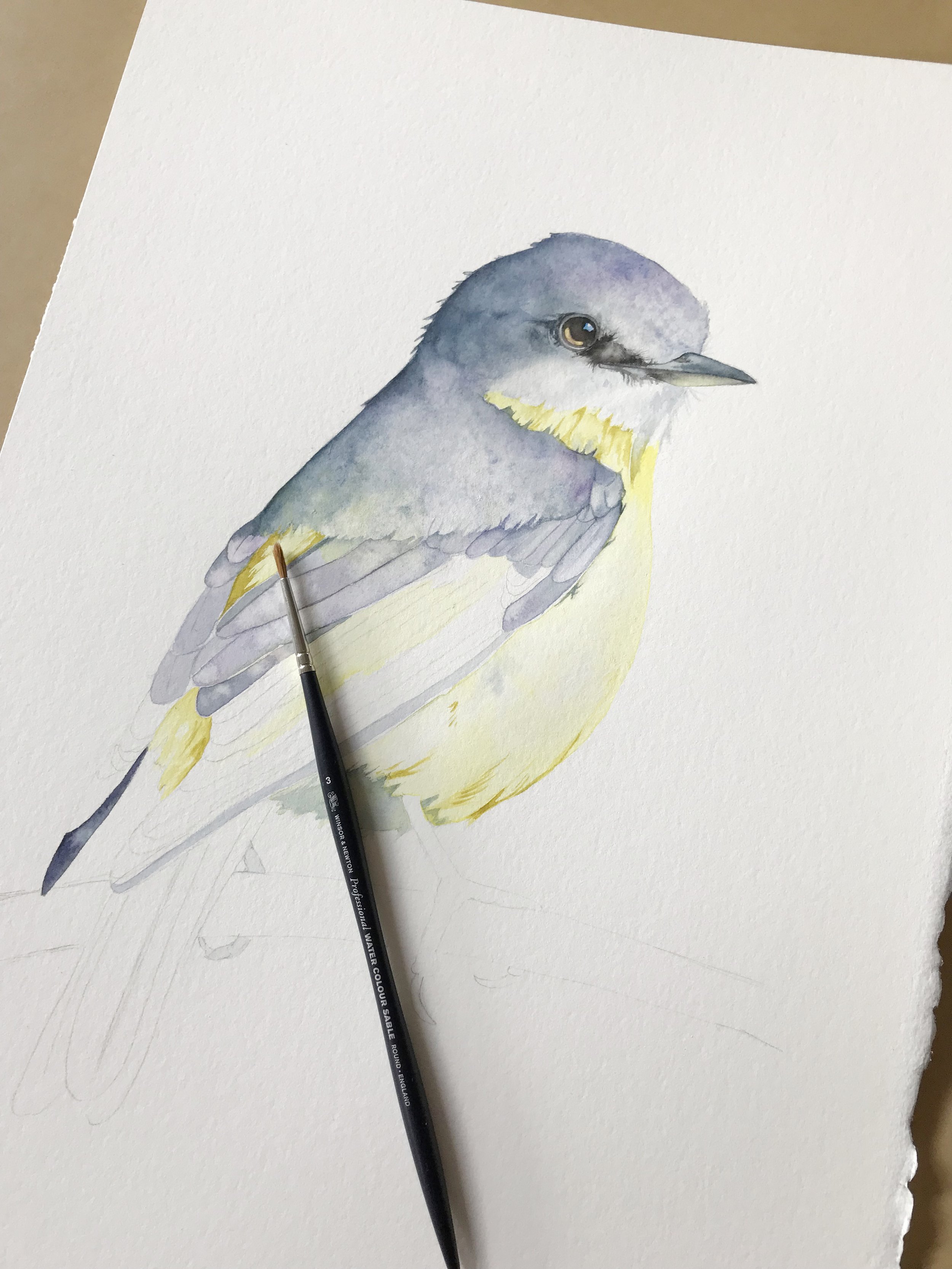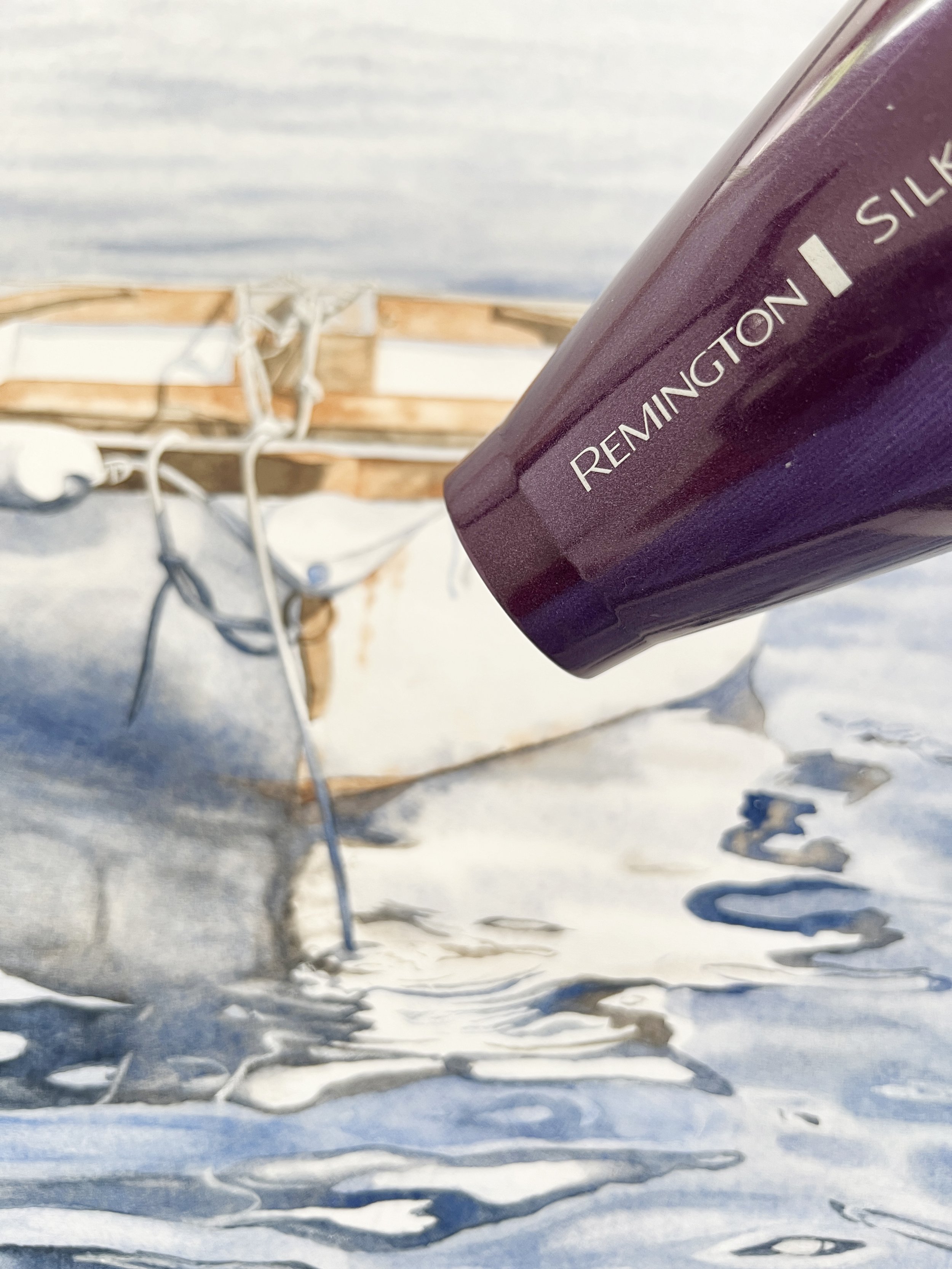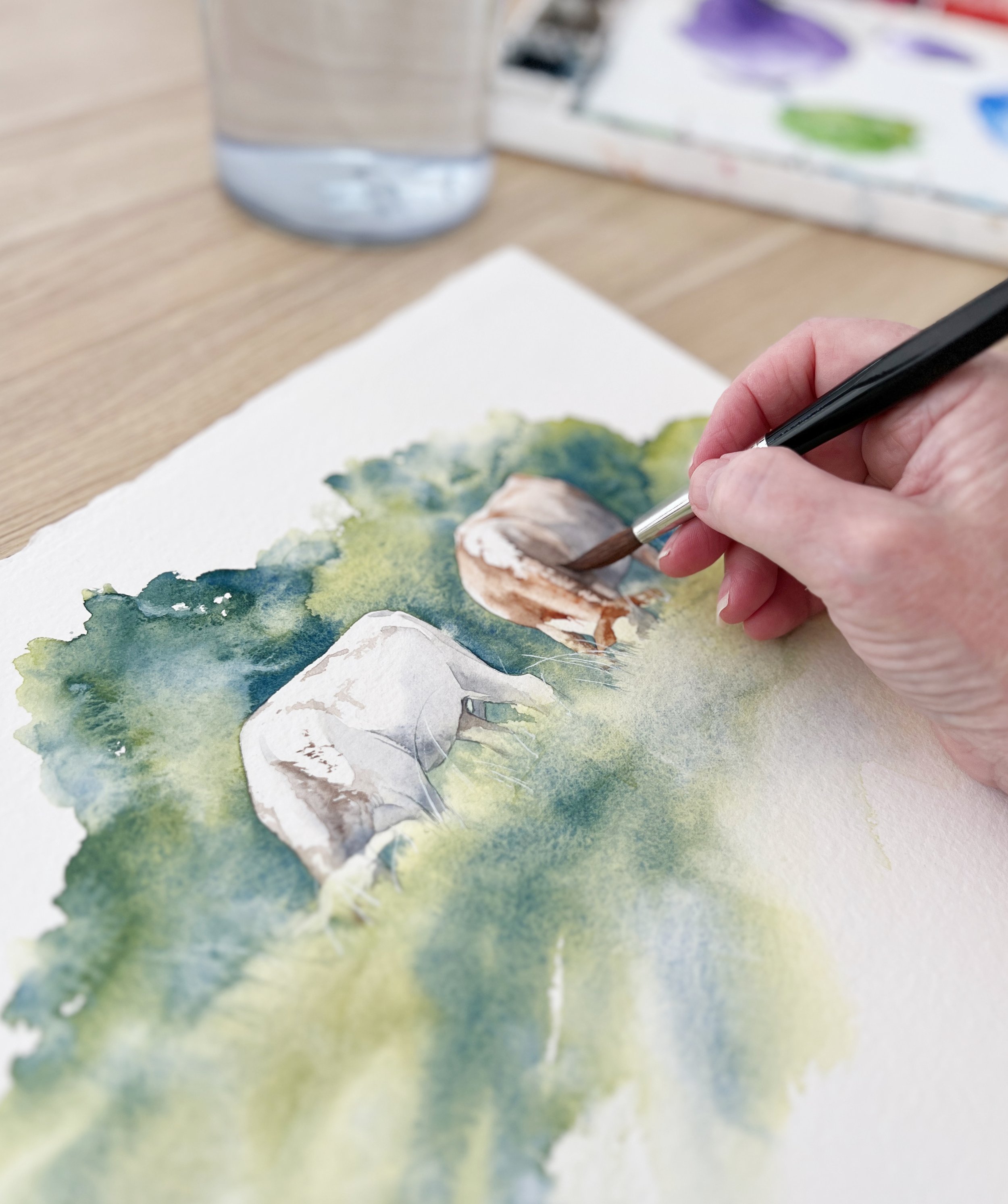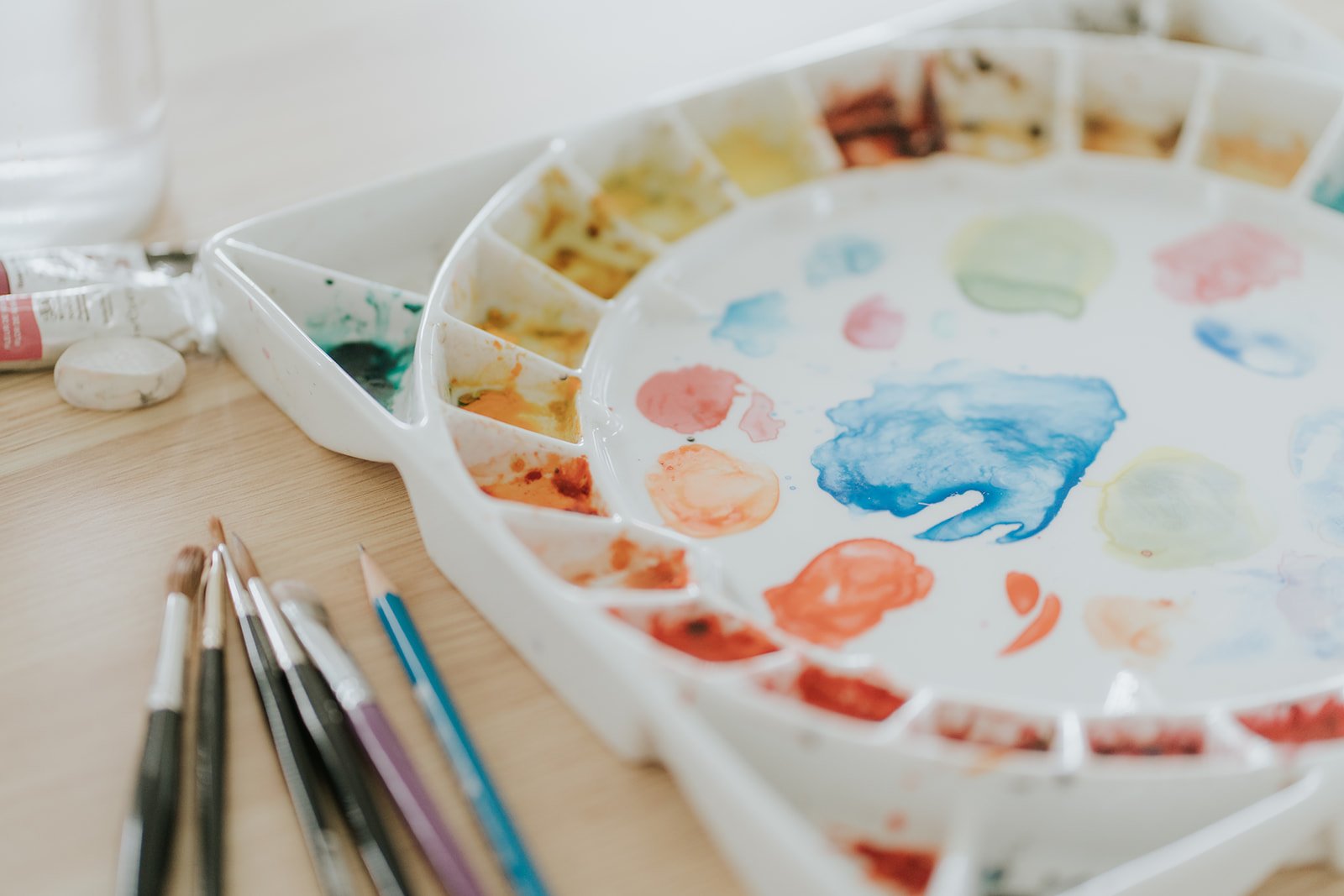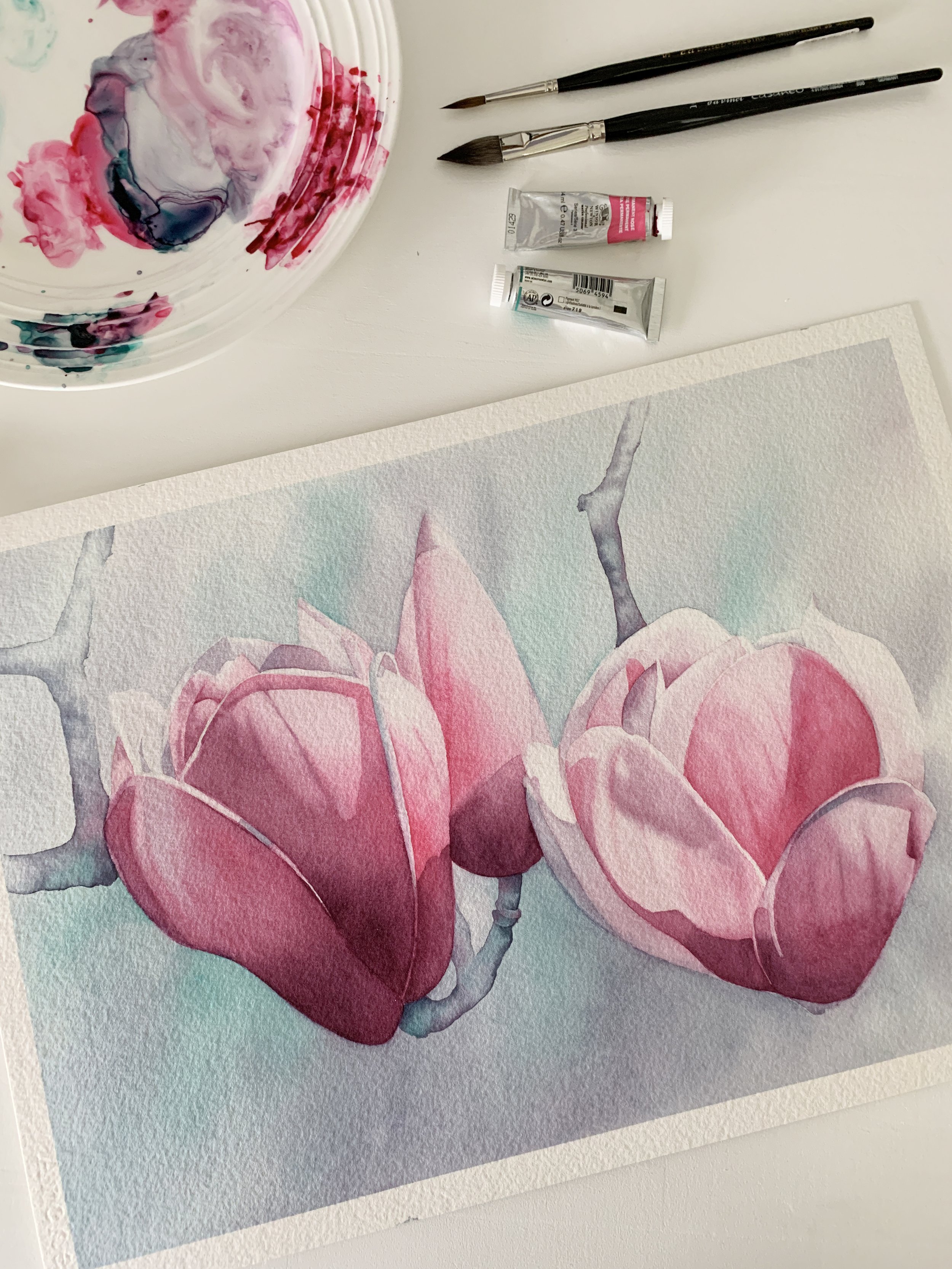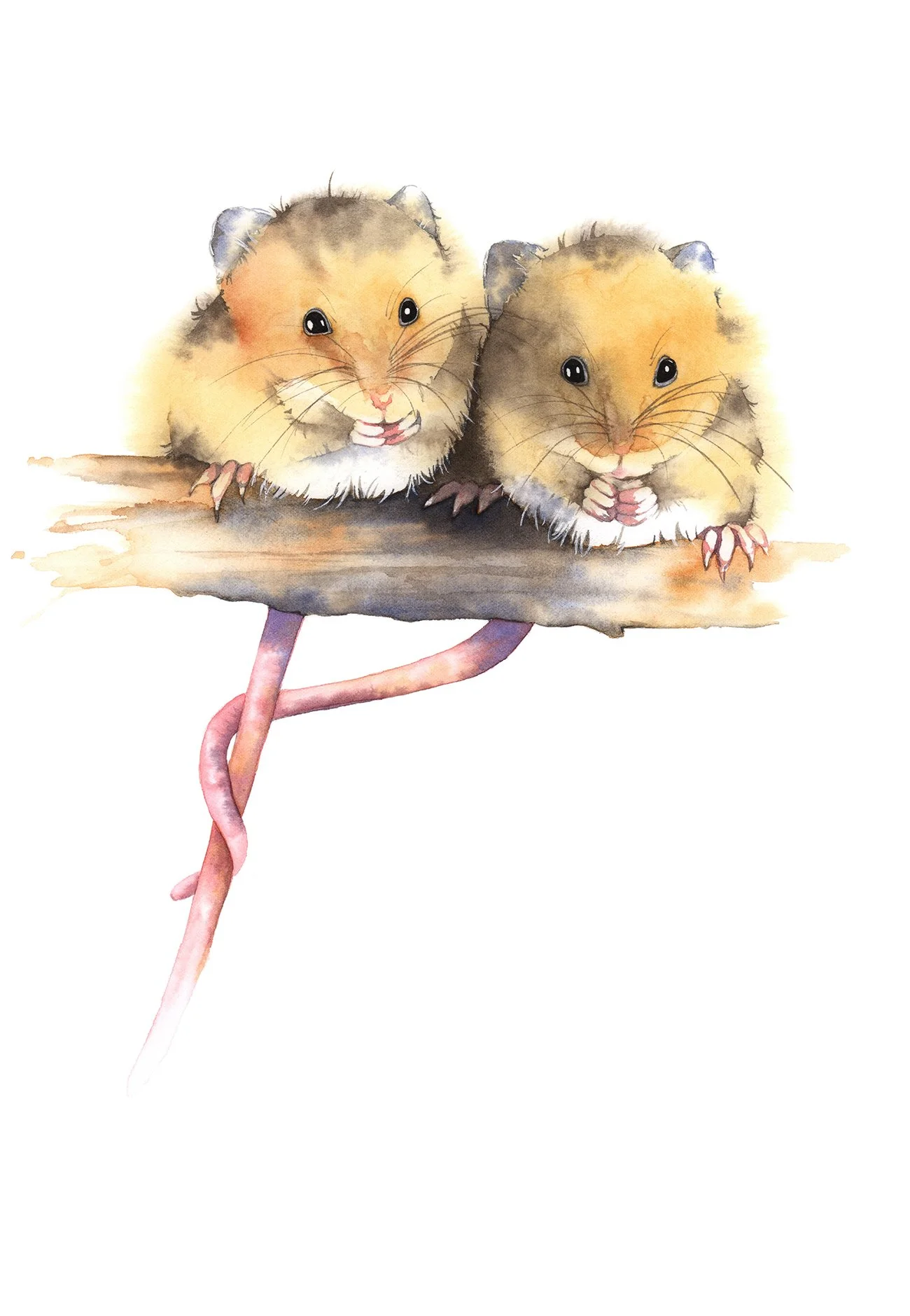10 Common Watercolour Mistakes and How to Fix Them
Watercolour painting is a magical experience, but it can also be tricky to master. It’s a medium that asks for patience, control, and a touch of spontaneity. Along the way, you might find yourself making mistakes that hinder your progress. But don't worry, you're not alone! We can fix mistakes easily.
Here are 10 common watercolour mistakes and how to fix them, so you can improve your technique and let your creativity flourish.
Eastern Yellow Robin watercolour painting.
1. Overworking the Painting
One of the biggest challenges with watercolour is knowing when to stop. It’s tempting to keep adding detail or tweaking areas that aren’t quite perfect, but overworking can lead to muddied colours and a lack of vibrancy. Over-blending or reworking the same area can strip away the freshness and spontaneity that make watercolour so beautiful.
I often have to stop myself from fiddling too much. It helps to take a step back, look at your painting with fresh eyes and identify, if that area really needs more work before you start messing with it. Finishing touches are okay, just don't overdo it.
How to Fix It: Plan your washes ahead of time. Visualise your layers, and trust your brushstrokes! If an area isn’t perfect, step back. Sometimes less is more in watercolour. Give yourself permission to walk away and come back with fresh eyes. You’ll often find that the “imperfection” is what makes your painting unique. Another tip is to use large brushes as much as you can. Larger brushes stop you from fussing to much with the paint.
Another common mistake is choosing brushes that are too small for the area you’re painting. Beginners often feel more in control with smaller brushes, but this can lead to overworking the paint and losing that fluid, fresh look. Opt for larger brushes whenever possible. A bigger brush covers more ground, helping you keep your strokes loose and confident, and stopping you from fussing over tiny details. Embrace the freedom of a larger brush - it’ll help bring more flow and energy into your work!
Working on my “Bubble Trouble” watercolour painting.
2. Using Too Much Water
Controlling water is key when working with watercolours. If you use too much, you’ll likely end up with blooms - those unwanted, cauliflower-like marks on a damp wash where the paint spreads out of control. This happens when your brush is too wet, or when water pools on your paper.
To avoid this, I always recommend being mindful of how much water is on your brush and paper. One trick I frequently use is dabbing my brush on a tissue or paper towel to remove excess water before applying it to my painting. This helps maintain crisp edges and prevents the paint from bleeding. I also look at the sheen of the wet paper. I don't want a dome of water sitting on top of the paper; I want a glossy sheen for more control.
Less water also gives you richer colours and more defined details - perfect for painting fine textures like fur or feathers. The key is finding that delicate balance, depending on whether you want soft blends or sharp lines.
How to Fix It: Getting the right balance takes a bit of experimenting. Pay attention to how much water is in your brush, on your paper, and in your paint mixture. If your brush and paper are both wet, try using a slightly thicker, less watery paint mixture to prevent blooms and keep colours vibrant. Adjusting any one of these - whether it’s the moisture in your brush, the dampness of the paper, or the consistency of the paint - can make all the difference in achieving the look you want. Keep tweaking until you find the combination that works for each part of your painting.
Here there is too much water on the paper. It's sitting above the surface of the paper and if I was to lift the paper it would flow everywhere.
3. Not Letting the Layers Dry
Watercolour’s transparency is what makes it so beautiful, but it’s also where the challenge lies. If you don’t allow each layer to dry completely before adding the next, you can disturb the underlying colours, causing them to mix in ways you didn’t intend. This can lead to muddy colours in your painting, where the vibrancy of the colours is lost.
Sometimes I'll use a hair dryer to make sure each layer is dry before I start the next but I make sure the paint is starting to dry by itself before I turn the hair dryer on.
Using the right technique to mix your colours directly on the paper or in your mixing palette, can also help in avoiding muddy colours.
I always recommend patience - let each layer dry fully before moving on to the next. You can use a hairdryer on a low setting if you're short on time, but taking those extra moments ensures your colours stay crisp and clean, maintaining the luminous quality that watercolour is known for. It is crucial for the glazing technique to really let each layer completely dry.
How to Fix It: Patience is essential. Allow each wash to dry completely before continuing with a new layer. Use a hair dryer on a low, cool setting if you're in a hurry, but be careful not to blow your wet paint around. By ensuring that each layer is dry, you maintain the integrity of your colours and achieve cleaner, more defined results.
4. Skipping Watercolour Paper Quality
Good quality, 100% cotton watercolour paper is essential for success in watercolour painting.
Many beginners often don’t realize just how important good quality paper is in watercolour painting. But trust me, the paper you choose can make all the difference. Lower-quality watercolour paper tends to absorb water inconsistently, which results in uneven washes and textures that can be hard to control. It also has a tendency to dry much faster. This can leave you frustrated when your watercolour paint doesn’t flow or settle the way you want it to.
I always recommend investing in professional-grade paper, like Fabriano Artistico or Arches. These papers hold water beautifully, allowing your washes to lay down smoothly and giving you the control and consistency you need for better results.
How to Fix It: Invest in professional-grade, thick paper. My personal favourites are Fabriano Artistico and Arches. These papers handle water beautifully and allow your washes to settle evenly, giving you more control and better results. Another paper that is less expensive than Arches and Fabriano, but is still good quality, is Saunders Waterford. Good paper also withstands lifting techniques better, allowing for more flexibility when correcting mistakes.
5. Lack of Value Contrast
One of the most common mistakes I see is not using enough contrast in a painting. Without it, your work can look flat and lifeless. Watercolour is transparent, so building depth is a gradual process, and it’s essential to create a strong range of light and dark values.
Don’t be afraid to push those darks! Starting with light washes and gradually building up to the darker areas gives your painting more dimension and brings it to life. It’s the contrast that adds that sense of depth and drama, helping your subject stand out and giving your painting a more polished, dynamic feel.
How to Fix It: Start by mapping out your lightest lights and darkest darks. Do a value study (in graphite) before you start painting. Don’t be afraid to go bold with your darks! A strong value contrast will add depth and drama to your work. Begin light, and gradually build your mid-tones and shadows. Remember, you can always add more darkness, but it’s difficult to lighten areas once they’ve become too dark.
Check your values by taking a photo of your painting and converting it to black and white. This makes it easier to see contrasting areas. If the contrast looks weak, deepen some areas around the focal point.
6. Using the Wrong Brushes
Your brushes are the most important tools in watercolour painting. If you’re using the wrong ones, you’ll have less control over your work. Brushes that don’t hold enough water or have the wrong shape or size for the area you are painting can make it difficult to achieve the effect you want. That’s why I always recommend investing in high-quality brushes. A good clean brush will hold plenty of water and pigment while maintaining a fine point for detail work. It allows you to paint edges with precision, while also being able to create soft edges.
I personally love using Da Vinci Maestro brushes for their precision, but Jackson’s Brushes are a great alternative if you’re looking for something more affordable. Having the right tools for your brush strokes makes all the difference in how your painting turns out!
How to Fix It: Invest in high-quality brushes that suit your painting style, and make sure you’re using the right size for each area. A brush that’s too small can cause issues, like the paint drying too quickly or requiring extra strokes to cover larger spaces, which can disrupt smooth washes. I recommend Da Vinci Maestro brushes for their precision and durability, while Jackson’s Studio Synthetic Brushes are a great budget-friendly alternative. A good brush will hold the right amount of water, keep a fine point, and make both detailed and broad work easier to achieve with control and consistency.
This is my branded set of Jackson’s “Studio Synthetic” watercolour brushes in my favourite sizes.
7. Being Afraid of ‘Happy Accidents’
My “Dorrigo Cows” vignette.
Watercolour’s fluid nature often surprises you with unexpected results like blooms or back-runs. While these might seem like mistakes at first, they can actually add a beautiful sense of spontaneity to your work if you embrace them with the right mindset.
Instead of fighting these effects, try to work with them. Sometimes, a bloom can create an interesting texture or enhance the feeling of movement in your painting. Remember, watercolour is about letting go of control to some degree, and often, these “happy accidents” are what make a piece more dynamic and unique!
How to Fix It: Don’t fight the water. Instead, learn to work with it. If you get a bloom (where excess water pushes the pigment aside), see how it contributes to the painting. Sometimes, these happy accidents add texture or depth that you wouldn’t have achieved otherwise. Let go of perfectionism, and trust the process.
8. Neglecting to Plan
Jumping straight into a painting without any prior planning can often lead to problems with composition or colours that don’t harmonize as well as you’d like. Without some sort of roadmap, you might run into unwanted surprises, like colours clashing or focal points not standing out enough.
That’s why I always recommend taking a few moments to plan before you start painting. Sketch out your composition lightly and think about your colour palette. Testing your colours beforehand can also help ensure they work well together.
A little bit of planning goes a long way in making your painting process smoother and more enjoyable!
How to Fix It: Before you start, take a few minutes to sketch out your composition and plan your colour scheme. Test your colours on a scrap piece of paper to make sure they work together. Think about where you want your hard edges and soft blends. This pre-planning will give you a clearer sense of direction once you begin.
9. Using Too Many colours
I used just two colours on this Magnolia watercolour painting.
It’s so tempting to use all the colours on your palette, but doing so can easily overwhelm your painting and lead to a chaotic, disharmonious result. Instead, it’s better to simplify your colour choices. Stick to a limited palette of colours that work well together. This will give your painting a more cohesive feel and allow the different elements to harmonize.
Plus, you’ll find that with just a few well-chosen colours, you can mix a wide range of beautiful hues. Less is often more when it comes to watercolour, and simplifying your palette can really elevate your work.
How to Fix It: Keep your palette simple. Often, less is more when it comes to watercolour. Stick to a limited selection of colours that complement each other. A cohesive palette will give your painting unity and balance, and you’ll still be able to mix a wide variety of hues from just a few well-chosen pigments.
10. Ignoring the Importance of Patience
Watercolour is a medium that truly rewards patience. If you rush through a painting, you’re likely to end up with muddy washes, poorly blended colours, and a lack of overall cohesion. It’s so important to take your time and let each layer dry fully before moving on to the next. This allows your colours to stay vibrant and clean, and your blends to be smooth and controlled.
Watercolour isn’t about speed; it’s about building up your painting slowly and thoughtfully, layer by layer. Patience really is key to achieving a polished and harmonious final result.
How to Fix It: Slow down! Let each layer dry completely before adding more, and be intentional with your brushstrokes. Practising patience with both the process and yourself gives you greater control and helps you create more polished, professional results.
Final Words
By understanding and addressing these common mistakes, you’ll see your watercolour paintings improve dramatically. Remember, the learning process is part of the journey, and each mistake brings you closer to mastering this beautiful medium.
Keep practicing, stay patient, and let your creativity shine!
If you are interested in learning to paint in watercolour, I have over 200 online, voiced over watercolour tutorials for all skill levels.
